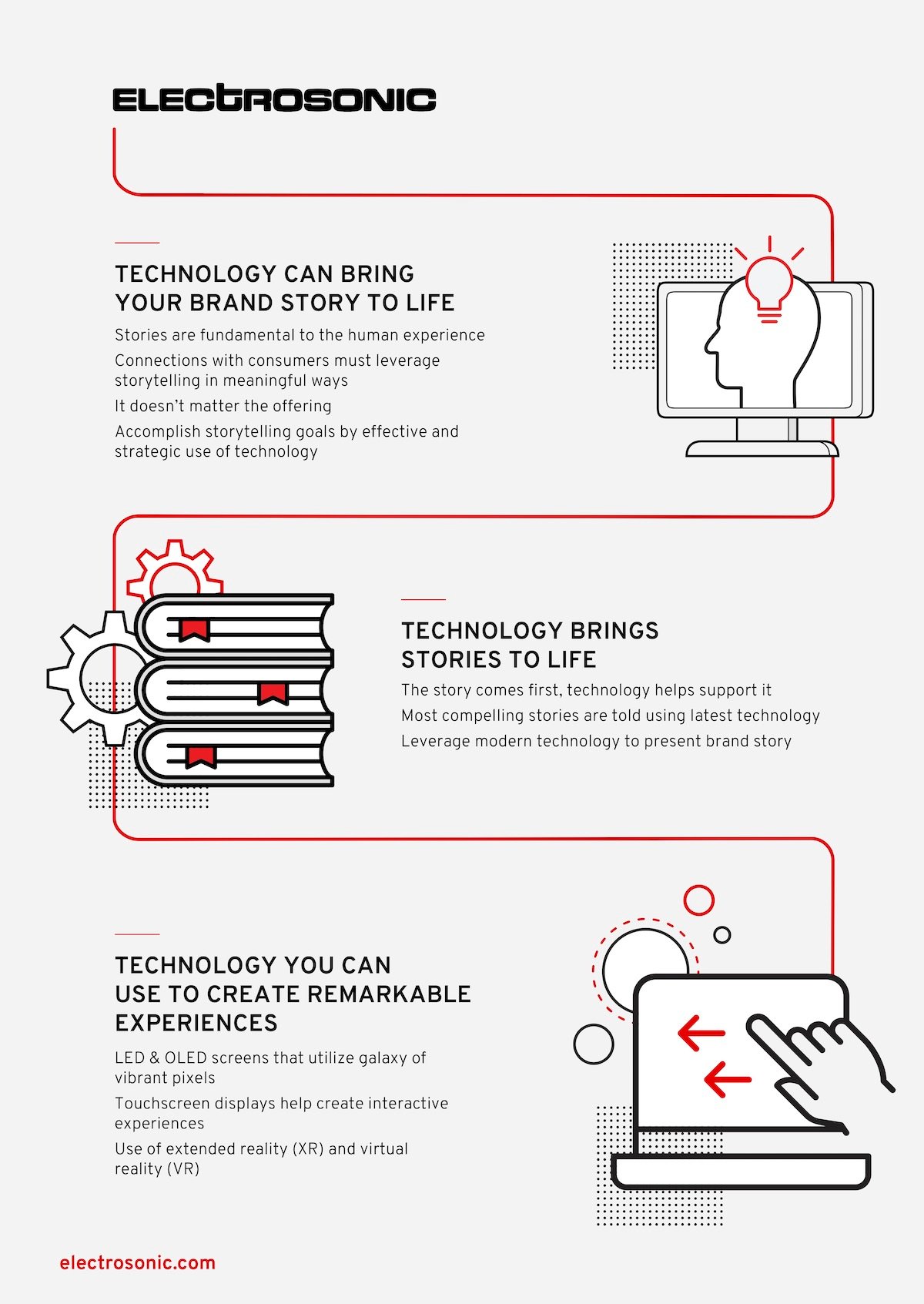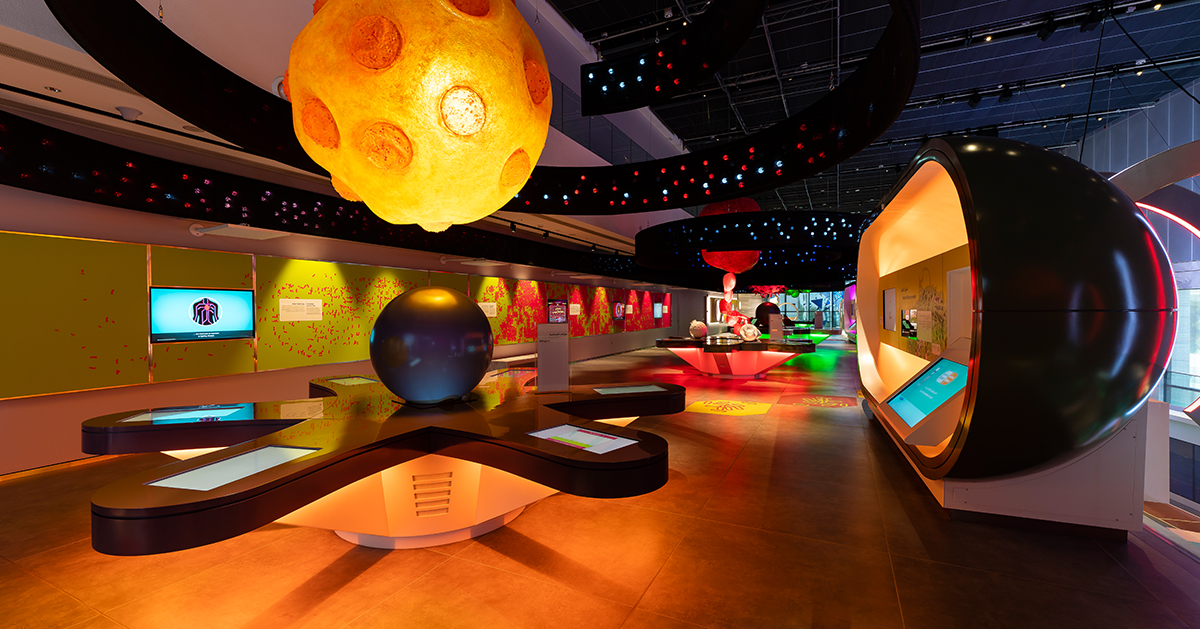
How technology plays a role in telling your story
Storytelling is part of the human experience. There’s a reason everyone keeps telling stories—they considerably impact how people interpret their lives. In the modern world of storytelling, technology plays a leading role. It quite literally brings stories to life, creating connections that will stay with us.
There’s even science to prove these assertions. One study concluded that brains relate best to characters, regardless of the narrative format. Scientists conducted MRIs on subjects while providing them with story elements. The participants had to explain the stories by speech, gesture or drawings. In doing so, the “theory of mind” network was activated, confirming that people are character-centric.
Another research project discovered that areas of the brain “light up” with the release of oxytocin when engaged with stories. It’s proof that stories have an emotional impact.
-jpg.jpeg)
The use of storytelling expands beyond the page and screen. They are a core component of today’s experience economy. Venues, attractions and brands are taking stories to new levels, and audiovisual (AV) technology is critical to these experiences. So, what can today’s storytellers do with technology?
How AV Technology Delivers Story Experiences
Spaces want to be places that capture a narrative with characters and plots. It’s easy to recognize the AV technology in use when directors and special effects professionals do this in movies and TV.
With every technology evolution, there’s always been bigger and better. Now those same tools are part of immersive experiences. These stories play out in interactive installations, theme parks, museums, corporate headquarters, retail stores and more. Any place that welcomes guests and visitors has the potential to infuse stories with technology.

Technology and Your Brand Story
- Stories are fundamental to the human experience.
- Connecting with consumers via storytelling can be more meaningful than other tactics.
- The type of format of a story doesn’t matter.
- Storytelling goals are attainable through the effective and strategic use of technology.
Technology’s Role in Storytelling
- The story is primary, and technology supports it.
- The latest technology provides the ecosystem for compelling storytelling.
- Leveraging modern technology will present a brand’s storyline best.
The AV Technology to Use for Remarkable Experiences
- Transparent LEDs and MicroLEDs that deliver vivid and vibrant images.
- Interactive displays and touchscreens to amplify experiences and engagement.
- Extended reality (XR) and virtual reality (VR).
- Projection mapping to make any surface a screen.
- Triggering technology such as LIDAR, which cues content in response to movements.
- Beam-foaming to create realistic soundscapes.
-jpg.jpeg)
AV Technology Must Be Thoughtful and Part of the Project from the Beginning
Start planning how to tell the story in your space and deliver the best experience for audiences. Remember, the story must come first, and you should apply AV technology thoughtfully. The technology should be part of the engine driving the emotional connection versus something just for show.
Leaving your customers with a lasting memory is the aim of storytelling. Technology should increase the enjoyment factor, not be a distraction or afterthought. Next, you’ll learn how to make this happen for your brand.
Creating Remarkable Experiences with Technology
In the 21st century, technology can do amazing things. The future doesn’t quite look like how pop culture envisioned it. There are no flying cars, but everyone does walk around with a small computer in their hand. The boundaries of what technology can deliver are being pushed every day. The key is to align your narrative with the appropriate technology. How will you transport that visitor to a different time and place? Or a completely new world?
Creating this requires many things, from the architecture to the content to the technology. All need to work together to drive the narrative. So, what can you do with technology right now to immerse guests into your story?
LEDs Invite Viewers into a New World
The latest innovations in LEDs include Transparent LEDs and MicroLEDs. Transparent LEDs sit behind glass and are viewable at a long distance. The vivid graphics are still apparent. MicroLEDs are the latest version of fixed-display technology, using millions of small, individually addressable diodes to create the image. An excellent example of a MicroLED’s contribution to the story is the 50-foot-long unit used at Summit One Vanderbilt’s Unity exhibit. Guests scan wristbands to reveal previously taken 3D facial images and watch them move among the “clouds.”
Interactive Displays and Touchscreens
Interaction elements make your guests part of the story. There are so many ways to tie this into narratives. The more interactive displays you use, the more exciting for guests. It was pivotal for exhibits at the International Spy Museum. With 16 interactives, guests see the world of spies in a way that no ordinary museum can offer.

Projection Mapping
Projection mapping turns any surface into a screen. When creating an immersive experience, you won’t always have a wall to project onto, as you’re curating a space to look and feel like more than just a room. With projection mapping capabilities, the smallest or largest objects add to the story. The Snorri Touren Dark Ride leverages the technique along with other advanced technology to create a 360-degree ride taking guests to a mysterious fantasy island.
LIDAR Technology
LIDAR tracks movements and responds to them, which adds another element to the story. Content can cue based on these with new options for interactivity. Illuminarium Atlanta weaves this into the experience of bringing the African grasslands a unique sensory space.
Beam-Foaming
The sound of stories is as important as the visuals. Beam-foaming enables the shaping and steering of sound beams in two dimensions. Sound localization is possible for a more realistic soundscape. Illuminarium Atlanta also capitalizes on this technology to create a 3D soundscape personalized for every guest.
The Reality Umbrella
XR is the “reality” umbrella, encompassing VR, augmented reality (AR) and mixed reality (MR). These technologies generate human-machine interactions through computer technology and/or wearables.
With VR, there is no creative limit to your storytelling. The technology allows you to insert an audience member directly into your imagined narrative. AR doesn’t provide the same level of total immersion. However, brands can use it to enhance engagement by injecting a little VR into the real world via mobile devices.
Partner with AV Technology and Experiential Design Experts
Whatever tale you want to tell, technology is here to facilitate it. It all starts with the story and working with a team of experienced AV professionals.
Collaborating with technology design consultants is a great way to kick off the process. Scheduling a design charette session is the perfect way to brainstorm ideas to deliver compelling stories that weave in all the possibilities of technology.
Alexander Hann
Alexander Hann, Communications Specialist, understands the challenges that clients face when they are making decisions about technology. He uses his extensive experience of communicating complex concepts to write about the latest developments in technology in a way that clearly explains benefits for business and technical decision-makers.










.jpg?width=1500&height=995&name=ELC501_N17_medium%20(1).jpg)

![[Learn how to create award-winning technology solutions]](https://no-cache.hubspot.com/cta/default/5104351/b51852bf-2463-4394-9287-7892a79c9def.png)
![[Learn how to create award-winning technology solutions]](https://no-cache.hubspot.com/cta/default/5104351/f77e0e89-11aa-4d10-a3c7-eaf630ade5b5.png)







































































































































































































